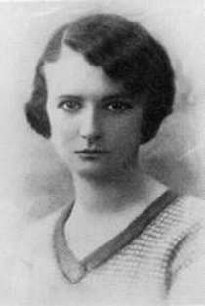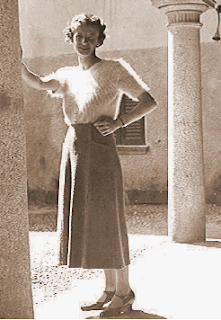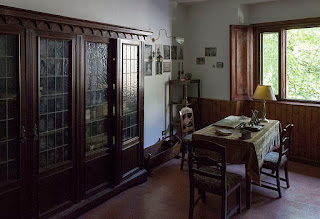Charlie Cairoli - circus clown
Milan-born performer who became a Blackpool legend
The circus clown Charlie Cairoli, who would at his peak set a world record by appearing at the Blackpool Tower Circus in England for 40 consecutive seasons, was born in Affori, now a suburb of Milan but then a town in its own right, on this day in 1910. Cairoli performed at the Tower for the first time in 1939 and returned every year until 1979, quitting only when his health began to fail him. The run was not broken even by the outbreak of the Second World War, which Britain entered soon after he arrived, or his own arrest as a suspected ‘enemy alien’. He was the Tower’s most popular attraction for almost all of those years. Cairoli, though born in Italy, was actually from a French family, albeit one of Italian descent, who christened him Hubert Jean Charles Cairoli. His father, Jean-Marie, was also a clown; his mother, Eugenie, came from another French circus family with Italian heritage, the Rocono. Charles - known as Carletto - and his brother Louis-Philippe became part of the show as young children. Carletto made his debut at the age of seven. At that age, he was doing little more than fetching and carrying for his parents, who were the stars. Read more…
____________________________________
Destruction of Monte Cassino Abbey
Historic monastery flattened in Allied bombing raid
The Abbey of Monte Cassino, established in 529 and the oldest Benedictine monastery in the world, was destroyed by Allied bombers on this day in 1944 in what is now acknowledged as one of the biggest strategic errors of the Second World War on the Allied side. The Abbey was attacked despite an agreement signed by both sides with the Vatican that the historic building would be respected as occupying neutral territory. But Allied commanders, who had seen their infantrymen suffer heavy casualties in trying to advance along the Liri valley, the route of the main highway between Naples and Rome, were convinced that the Germans were using the Abbey, which commands sweeping views of the valley, at least as a point from which to direct operations. This perception was reinforced by a radio intercept, subsequently alleged to have been wrongly translated, which suggested a German battalion had been stationed in the Abbey, ignoring a 300-metre area around it that was supposed to be out of bounds to soldiers on both sides. Knowing the outrage their action would prompt, military sources in Britain and the United States leaked details of their suspicions to the newspapers, who obligingly printed stories that seemed to justify the plan. Read more…
______________________________________
Totò – comic actor
50 years on, remembered still as Italy’s funniest performer
The comic actor Antonio De Curtis, universally known as Totò and still winning polls as the most popular Italian comedian of all time a half-century after his death, was born on this day in 1898 in Naples. Totò had a distinguished career in theatre, wrote poetry and sang, but is best remembered for the 97 films in which he appeared between 1937 and his death in 1967, many of which were made simply as a platform for his inimitable talent. Although he worked in dramatic roles for some of Italy’s most respected directors, it was for his comedy that he was most appreciated. His characters were typically eccentric, his acting style sometimes almost extravagantly expressive both physically and vocally. In his humour, he drew on his body and his face to maximum effect but also possessed an inherent sense of timing in the way he delivered his lines. Often, at the peak of his screen career with his characters so well defined, he would dispense with much of his script and simply ad lib, giving free rein to the cynicism and irreverence that came naturally. Such was his popularity that after his death from a heart attack at the age of 69 he was given funerals both in Rome, where he lived, and in his native Naples. Read more…
___________________________________
Galileo Galilei – astronomer and physicist
Scholar has been judged to be the founder of modern science
Renaissance scientist Galileo Galilei was born on this day in 1564 in Pisa. His astronomical observations confirmed the phases of Venus, discovered the four largest satellites of Jupiter and analysed sunspots. Also among his inventions was a military compass. Galileo was educated at a monastery near Florence and considered entering the priesthood but he enrolled instead at the University of Pisa to study medicine. In 1581 he noticed a swinging chandelier being moved to swing in larger and smaller arcs by air currents. He experimented with two swinging pendulums and found they kept time together although he started one with a large sweep and the other with a smaller sweep. It was almost 100 years before a swinging pendulum was used to create an accurate timepiece. He talked his father into letting him study mathematics and natural philosophy instead of medicine and by 1589 had been appointed to the chair of Mathematics at Pisa. He moved to the University of Padua where he taught geometry, mechanics and astronomy until 1610. Galileo met with opposition from other astronomers and was investigated by the Roman Inquisition in 1615. Read more…











.jpg)

.jpg)



.JPG)
